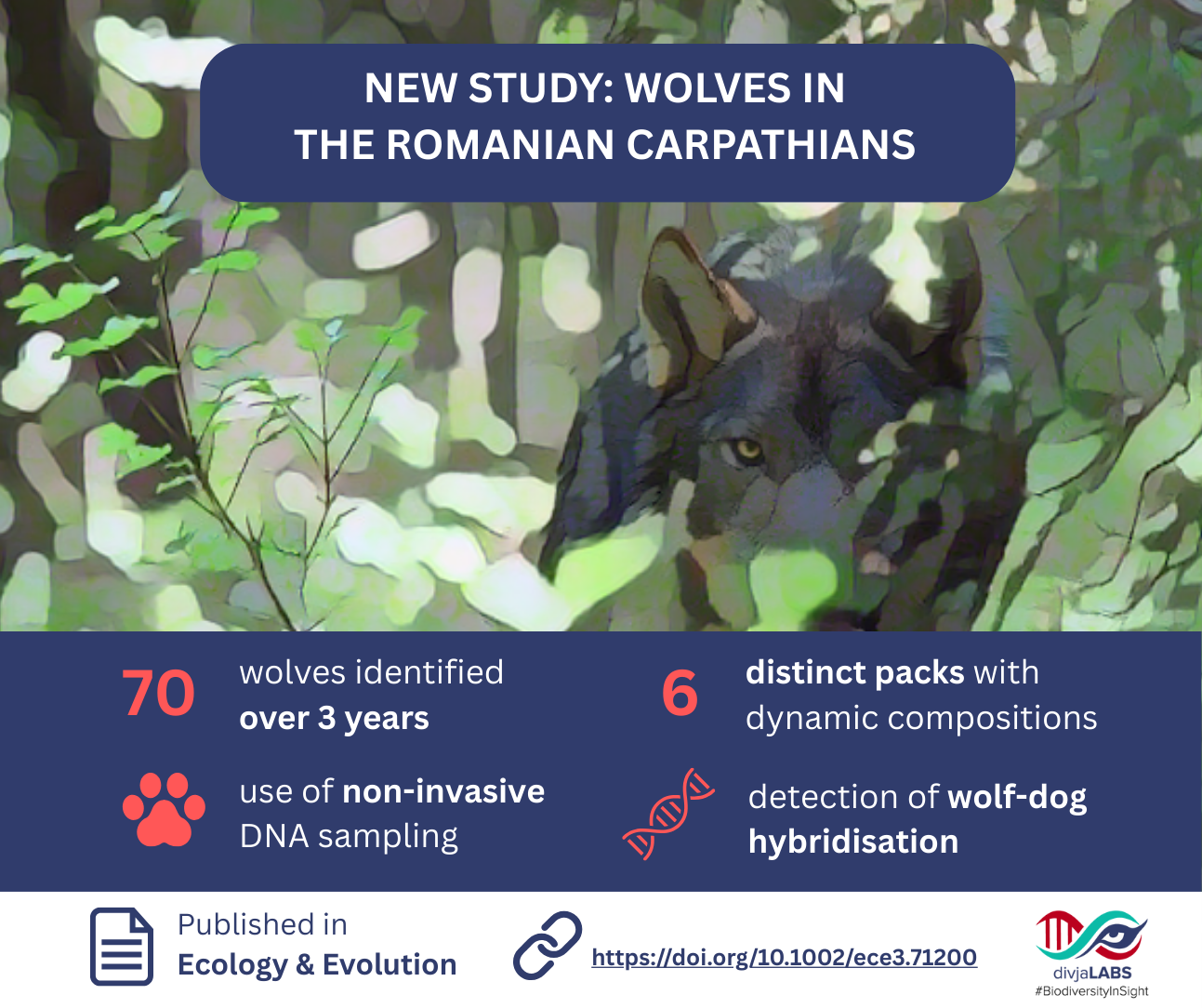The Carpathian Mountains are home to one of Europe’s last strongholds for large carnivores, and a new study shines a spotlight on just how important—and complex—this landscape is for wolves (Canis lupus). In a collaborative effort, scientists from Fundatia Conservation Carpathia and DivjaLabs, along with academic partners from Romania, Slovenia, and Hungary, have published a study in Ecology and Evolution that delivers one of the most comprehensive noninvasive assessments of wolf population size and composition ever conducted in the region.
👉 Read the open-access article
How the study was done
Between 2017 and 2020, employees and volunteers of Fundation Conservation Carpathia collected over 500 samples of wolf scat, hair, urine, saliva, and blood across a 1400 km² area in the Southern Romanian Carpathians. Using noninvasive genetic analysis and spatial capture–recapture (SCR) modeling, they were able to identify individual wolves, reconstruct pack relationships, and estimate population density.
Instead of relying on traditional snow tracking—which is increasingly unreliable due to climate change—this study leverages modern genetics to build a much clearer, more accurate picture of the wolf population.
Key findings
📌 Population Size and Density
-
Estimated 70 wolves in the study area with a density of 2.35 wolves per 100 km², consistent with other European populations.
📌 Social Structure and Movement
-
Six wolf packs were identified, with pack sizes ranging from 2 to 7 individuals.
-
The study tracked turnover in breeding pairs and the presence of unrelated individuals joining packs, indicating healthy connectivity and gene flow across the landscape.
📌 Hybridization Alert
-
One first-generation wolf–dog hybrid was confirmed—the first genetic evidence of hybridization in this region. While rare, this finding underlines the need for continued monitoring of free-ranging domestic dogs.
Implications for management
This study doesn’t just contribute to academic knowledge—it provides actionable insights for wildlife managers:
-
🗺️ Corridor conservation and pack monitoring: Knowing where wolves live, how they move, and who they associate with is critical for conserving connectivity and reducing conflict with humans.
-
💰 Cost-effective monitoring: With a budget of ~€52,000 for 1000 km², the researchers outlined a repeatable, scalable methodology for long-term monitoring—potentially replacing outdated snow tracking methods.
-
📈 A replicable model: This project sets a new standard for monitoring wolves in Europe’s rugged and fragmented landscapes.
Why this study matters
With increasing pressure from infrastructure, agriculture, and tourism, the Carpathian ecosystem stands at a crossroads. Science-based decision-making—rooted in robust, field-collected data like this—is essential for ensuring coexistence between people and large carnivores.
This study proves that with the right tools and partnerships, we can do more than protect biodiversity—we can understand and plan for its future.
